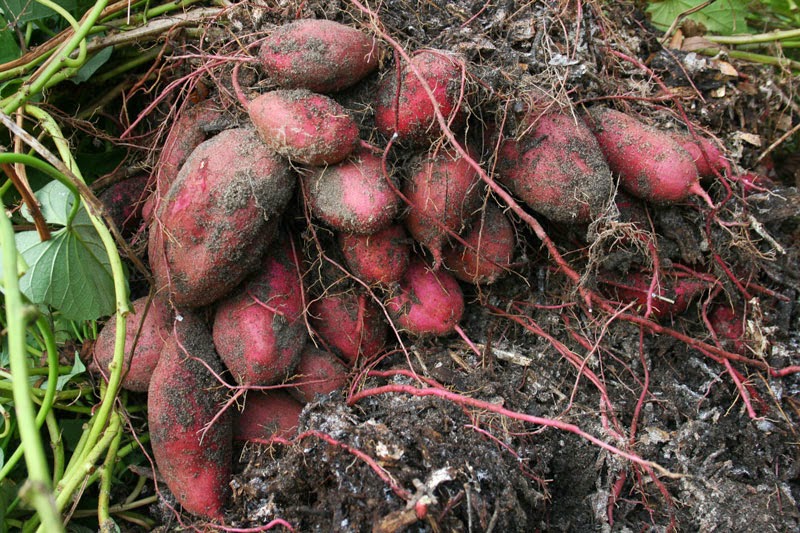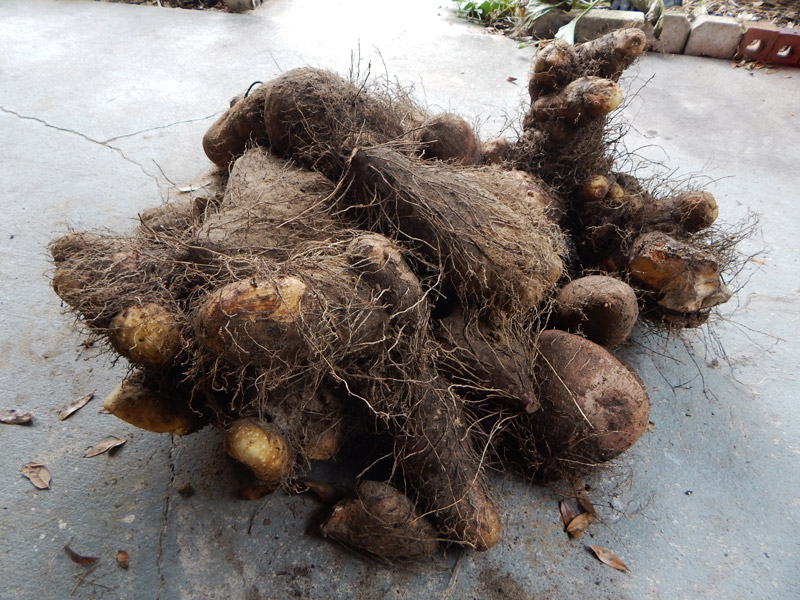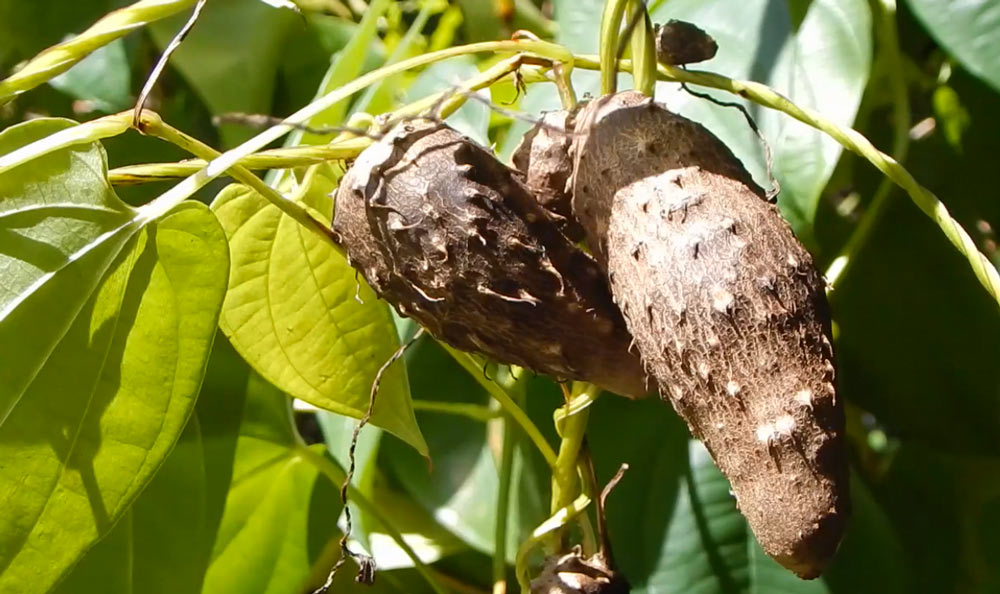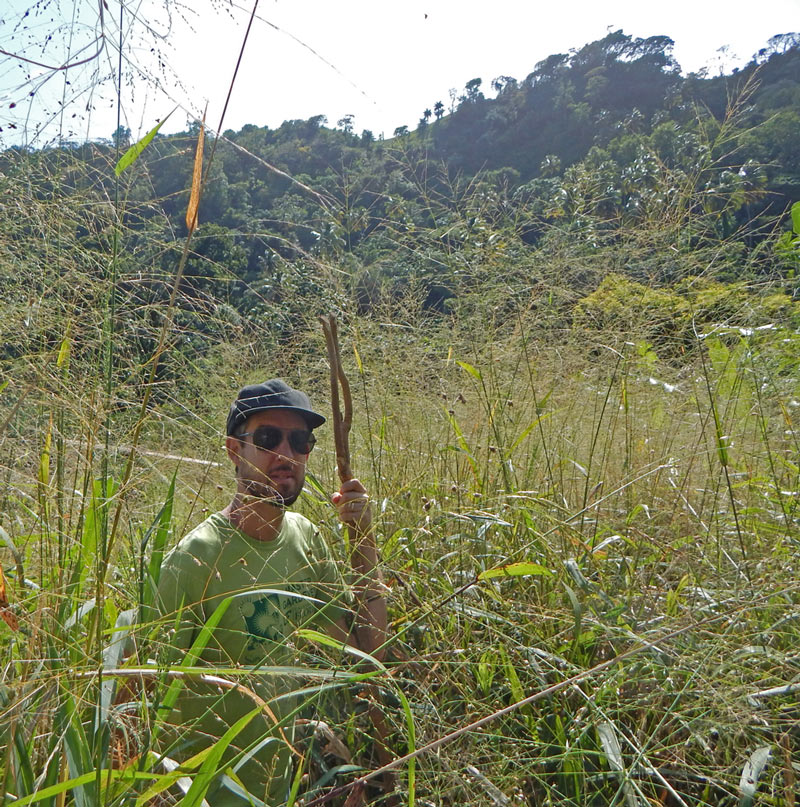One of my favorite crops of all-time is the oft-overlooked yam.
Not these:

I like those, but those are sweet potatoes. They are not yams. Never call them yams.
Never.
These are yams:
And those wonderful roots grow wild here in the mysterious tropical locale we now call home.
They are in the jungle, just waiting to be dug. And at this time of the year, they have produced bulbils which can be used for planting.

Yesterday Rachel and I took a hike down the mountainside, across the river, then up the other side into the jungle.

It was a combination of bulbil hunt and hard exercise.
By the way, that tall tropical grass there makes a great mulch/compost amendment/fertilizer. Cut it down and let it lay on the ground… it turns into beautiful humus and brings in lots of life.
But I digress.
This hunt for yam bulbils for planting isn’t a new thing for me.
I did it for multiple years in North Florida as well, where the exact same delicious species of yam grows in the wild, just as it does here in the tropics. The state of Florida calls it an invasive. I call it an awesome source of high-quality calories and I’m GLAD it invaded the state.
Heck with you fuddy-duddies and your invasive species lists.
All hail Dioscorea alata – the winged yam!
I love these things. They taste remarkably like a potato, though I actually think they taste a little better, and they take almost no work to grow.
If you hunt for bulbils a few months from now you aren’t likely to find any – you really only get them during the winter months when the vines have entered their dormancy cycle after fattening up the bulbils, which start falling to the ground as the vines wither. The bulbils are just aerial roots with a more entertaining name.
Snag them if you can find them, then plant now through early spring. And make the bulbil hunt fun. Rachel and I did.
True yams are one of my top staple crops and feature prominently in my popular Florida gardening book.
You can read more about them here as well.


2 comments
Anyone in Florida, in or near Marion County, I found a TON of dioscorea alata on the side of the road off of 200A. I dug up a 35lb tuber. Here is the link that provides the exact address. Just zoom in on the tag at the bottom right corner of the scan.
http://florida.plantatlas.usf.edu/img/specimens/USF/282653.jpg
Fantastic!
Comments are closed.